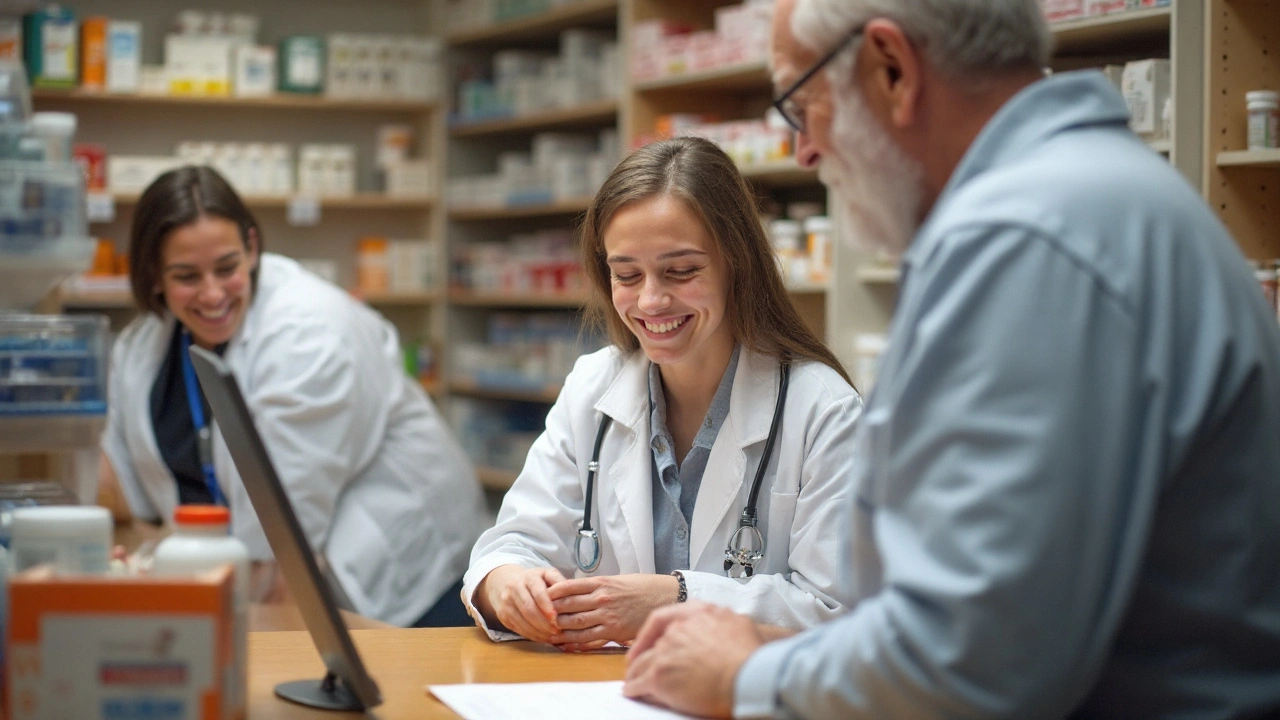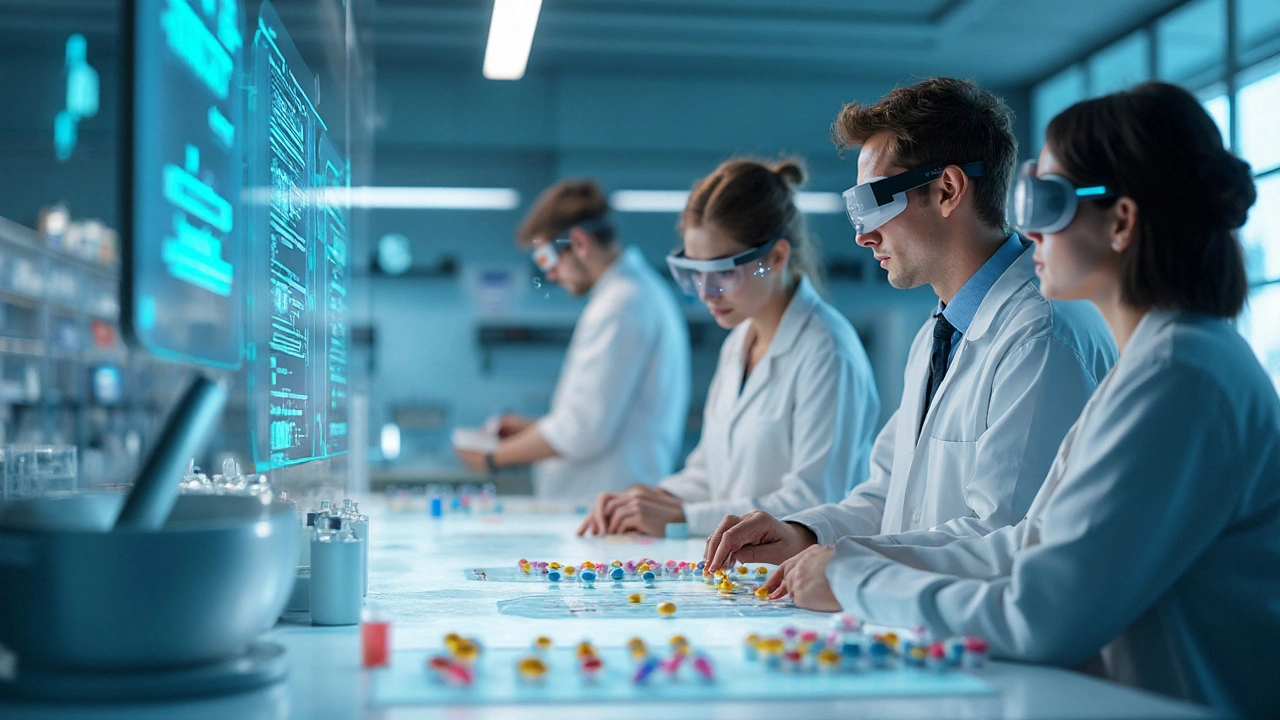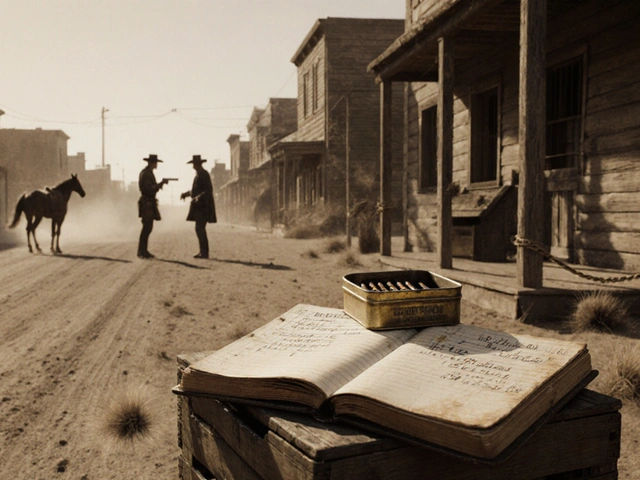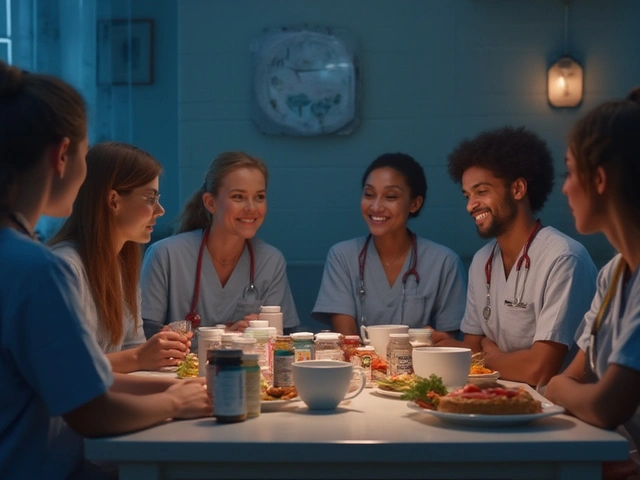If you think pharmacists just count pills behind a counter, you’re missing a ton of action. Training to become a pharmacist today is way more intense and tech-filled than your grandparents could have guessed. Kids grow up watching their parents pick up medicine, but rarely stop to wonder: how did the friendly person in the white coat learn all this stuff? The truth is, modern pharmacists juggle the pressure of medical know-how, people skills, regulations, and technology, all while making sure patients go home healthier. This job is loaded with responsibility—those little pills can save lives, but the tiniest mistake? Well, let’s just say, nobody wants to mess that up.
The Long Journey: From Classroom to Counter
So what does it actually take to become a pro at the pharmacy counter? It all starts in college, but not just any college. Most hopefuls jump into pre-pharmacy programs after high school, taking a heavy mix of chemistry, biology, math, and lots of science labs. They need to get the basics down—what’s in Tylenol, how does insulin really work, what happens if you mix certain drugs? This is where the science foundation gets built, brick by brick.
After knocking out those pre-reqs, things get tough. Students apply to pharmacy schools, and these aren’t your average classrooms. According to the American Association of Colleges of Pharmacy, there are over 140 accredited pharmacy schools in the US as of 2025. To get a spot, you need solid grades, good test scores, and often a bit of volunteer or even paid experience in a pharmacy. The Doctor of Pharmacy (PharmD) program itself usually lasts four years—plenty of late-night study sessions, back-to-back exams, and mountains of flashcards going into memorizing drug names, side effects, and interactions.
One friend of mine, who just graduated, joked that her classmates could recite the difference between warfarin and heparin in their sleep. But it’s not all about cramming. Modern pharmacy schools mix it up with group projects and simulated patient scenarios. Some students wear lab coats and role-play with actors pretending to be confused or upset customers. It sounds silly, but it works. When you throw a pharmacy student into a fake crisis (“My kid just swallowed a whole bottle of vitamins!”), it actually sticks better than a pop quiz. And trust me, the wildest scenarios in roleplay sometimes show up in real life—parenthood will teach you that real-world chaos always finds a way in.
But let’s not sugarcoat the pressure: drop-out rates in the first year can be as high as 10–15% at some schools. These programs aren’t forgiving, because when you’re dealing with real lives, no one wants a pharmacist who’s only half-prepared.
Learning More Than Medicine: People, Ethics, and Emergencies
The list of what future pharmacists have to know gets longer every year. The days of simply memorizing drug names are gone; today, it’s about understanding the whole picture. Before Jasper or Mira (yep, my kids) could even get an allergy syrup, the pharmacist behind the counter checked for allergies, looked up insurance stuff, and maybe caught a possible bad reaction no one else spotted. They do this a hundred times a day.
PharmD programs work hard on people skills because dealing with patients is at the core of the job. There are actual classes just for communication—how to talk so someone will actually listen, how to break bad news without panicking the customer, and how to recognize signs of abuse or addiction. Many colleges use live video feedback and peer reviews, so you can’t dodge the spotlight. Students who seem shy at first often turn into confident public speakers by graduation, which is something the job demands.
Then, there’s the whole world of ethics and law. Pharmacists have to know the legal ins and outs around controlled substances, privacy, fraud, and insurance. It’s not just about protecting themselves from lawsuits, either. Ethical dilemmas hit hard when you’re working in rural towns or lower-income neighborhoods, where people depend on you for more guidance than just “take this with food.” Sometimes folks ask about birth control or vaccines, and the pharmacist needs to listen without judging, balancing laws against real-life situations. In the words of Dr. Anna Legreid Dopp of the American Society of Health-System Pharmacists:
“Pharmacists are frequently the most accessible health care providers, especially in underserved communities. Their training must reach far beyond the basics, equipping them for anything that walks in the door.”
Emergency training is part of the package, too. Students drill scenarios for allergic reactions, opioid overdoses, and even minor burns. Many schools run simulations of emergency rooms and disaster relief—think power outages, mass flu outbreaks, or even chemical spills. You never know when someone will stagger in needing help before an ambulance arrives.

The High-Tech Tools Modern Pharmacists Use
Old-school pharmacists relied on scales and mortar and pestle. Today, students train with digital everything: prescription databases, automated pill counters, and robotic dispensing machines. You’ll find some pharmacy schools with mock community pharmacies, perfectly kitted out with the technology students will see on the job.
Clinical decision software is a big deal. It flags drug interactions, suggests dosages based on the latest research, and will even remind the user to call the prescriber if something looks off. Students get regular drills in using these programs, so when a real mom with a fussy toddler hands them a prescription, they’re focused on safety and efficiency. Check out this high-level snapshot of the tools and their functions:
| Tool | Main Function |
|---|---|
| Automated Dispensing Robots | Count and package pills precisely, reduce human error |
| Pharmacy Management Software | Digital records, refill management, insurance processing |
| Clinical Decision Support | Flags allergies, interactions, dose checks |
| Telepharmacy Platforms | Consult with patients and doctors remotely |
The COVID-19 pandemic turbo-boosted telehealth and remote care. Now, pharmacy students learn to counsel patients by video chat and call. They troubleshoot tech issues (“Sorry, that’s just my six-year-old running in the background,” is now considered normal), and learn to spot trouble even when helping someone miles away.
More schools now include training on pharmacogenomics, which is basically the science of customizing medication to someone’s genes. This is wild—use a spit sample to get the right antidepressant on the first try, for example. The future is zooming in fast, and new grads will need to keep up.
Pharmacy students also get exposed to advanced compounding labs. This is where the magic really happens, creating custom meds for patients with allergies, special needs, or odd dosages. It’s not about throwing stuff together; safety rules are strict and students have to master the procedure before they’re unleashed in the real world.
Real-World Practice: Rotations and Internships
This is where students finally leave the classroom for the hospital hallway or neighborhood corner store. These stints are called rotations or internships, and they last for weeks or even months in all sorts of settings. One week might be in a busy inner-city hospital pharmacy, and the next in a sleepy rural drugstore where everyone knows your name.
Rotations teach skills no lecture can: handling angry customers, dealing with unusual or rare prescriptions, and learning that sometimes, paperwork can swallow your day. Students shadow seasoned pharmacists, process real prescriptions, and often act as a second set of eyes—meaning they might catch errors an exhausted pro has missed. And sometimes, a supervisor hands them a sticky ethical puzzle, like what to do when a parent clearly wants antibiotics for a viral infection (spoiler: explain, gently but firmly, why that’s not safe or effective).
Pharmacy schools require students to rack up a certain number of supervised clinical hours—usually around 1,500–2,000 before they even graduate. These hours build muscle memory, and students constantly get evaluated on accuracy, communication, and even bedside attitude. Tips for surviving rotations from recent grads: eat before your shift, double-check every label, and don’t be afraid to ask the pharmacist if you’re unsure. The person training you would rather answer a dumb question than have you make a dangerous mistake.
During these rotations, students often learn about emerging roles too. Vaccination has become a core pharmacy duty—most new grads are trained to give vaccines, manage patient anxiety, and handle paperwork. Some rotations even dive into medication therapy management, where the pharmacist acts as an advisor for patients juggling multiple prescriptions. There’s growing focus on mental health, too, so students get time reviewing patient records with psychiatrists or counseling patients on how to track their medicine without missing doses.
This hands-on training can be both intimidating and exhilarating. For example, my cousin’s pharmacy intern once found a critical prescription error missed by a tech, and the pharmacist told him straight out, “You may have just saved a life.” That kind of real-world lesson sticks for good.

Staying Ahead: Lifelong Learning and New Frontiers
Graduating with a PharmD feels like climbing a mountain, but it’s not the end. Pharmacists are required to stay sharp. State boards mandate continuing education—anywhere from 15 to 45 hours every year, depending on where you work. This means online classes, webinars, journal quizzes, and sometimes traveling to big conferences where new drugs and therapies are unveiled.
Specialization is exploding. You’re seeing pharmacists trained in oncology (cancer care), pediatrics, infectious diseases, geriatrics, and even veterinary pharmacy. There are formal residencies—one or two years of extra training. This is a big deal in places like hospitals, where pharmacists regularly recommend and adjust treatments for cancer patients or those with heart failure. In some states, pharmacists even have authority to prescribe in certain scenarios, such as birth control or smoking cessation treatments.
Here’s another fact: a 2024 study published in the Journal of the American Pharmacists Association found nearly 80% of pharmacy grads expect to learn new digital documentation systems in their first year alone. It’s a non-stop process. Staying up to date with new meds, tech, and regulations is a constant grind—one slip, and you’re behind.
Community connection is another emerging trend. Pharmacists are jumping into roles as health coaches, vaccination educators, and advocates for public health. Many run free blood pressure screenings, diabetes check-ups, or speak at local schools. Reflecting back, the pharmacist my kids see every month doesn’t just hand over medicine; she’s dished out everything from flu advice to tips on avoiding burnout for working parents.
New frontiers keep showing up. Tech companies are testing AI-driven prescription checks, drones delivering meds to remote locations, and apps that remind you when it’s time for your next refill. These changes mean pharmacy schools need to stay on their toes—constantly adjusting the curriculum, bringing in practicing experts, and making sure graduates are ready for anything thrown at them.
So, how are future pharmacists trained now? With a blend of science, hardcore practice, people skills, ethics, and a dash of tech wizardry. The next time you see someone behind the counter, remember: there’s a lot more going on than you might think. That white coat covers a whole world of know-how, and every new graduate is carrying forward a mission—keeping all of us safer and healthier, no matter how unpredictable the world gets.






